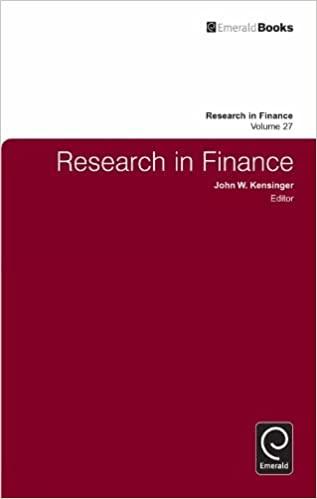Answered step by step
Verified Expert Solution
Question
1 Approved Answer
THETEH FOR PART C, THE FILL IN THE BLANK OPTIONS ARE THE WORDS POSITIVE OR NEGATIVE (Related to Checkpoint 5.2) (Future value) Leslie Mosallam, who
THETEH
FOR PART C, THE FILL IN THE BLANK OPTIONS ARE THE WORDS POSITIVE OR NEGATIVE
(Related to Checkpoint 5.2) (Future value) Leslie Mosallam, who recently sold her Porsche, placed $9,800 in a savings account paying annual compound interest of 6 percent. a. Calculate the amount of money that will accumulate if Leslie leaves the money in the bank for 2, 6, and 16 year(s). b. Suppose Leslie moves her money into an account that pays 8 percent or one that pays 10 percent. Rework part (a) using 8 percent and 10 percent. c. What conclusions can you draw about the relationship between interest rates, time, and future sums from the calculations you just did? a. After placing $9,800 in a savings account paying annual compound interest of 6 percent, the amount of money that will accumulate if Leslie leaves the money in the bank for 2 year(s) is $ - (Round to the nearest cent.) If she leaves the money in the bank for 6 years, the amount of money that will accumulate is $. (Round to the nearest cent.) If she leaves the money in the bank for 16 years, the amount of money that will accumulate is $ (Round to the nearest cent.) b. If Leslie moves her money into an account that pays 8 percent compounded annually for 2 year(s), the amount of money that will accumulate is $. (Round to the nearest cent.) If Leslie moves her money into an account that pays percent compounded annually for 6 years, the amount of money that will accumulate is $. (Round to the nearest cent.) If Leslie moves her money into an account that pays percent compounded annually for 16 years, the amount of money that will accumulate is $. (Round to the nearest cent.) If Leslie moves her money into an account that pays 10 percent compounded annually for 2 year(s), the amount of money that will accumulate is $ (Round to the nearest cent.) If Leslie moves her money into an account that pays 10 percent compounded annually for 6 years, the amount of money that will accumulate is $. (Round to the nearest cent.) If Leslie moves her money into an account that pays 10 percent compounded annually for 16 years, the amount f money that will accumulate is $ (Round to the nearest cent.) c. What conclusions can you draw about the relationship between interest rates, time, and future sums from the calculations you just did? There is a relationship between the interest rate used to compound a present sum and the future value of that sum. There is a years for which the compounding continues and the future value of that sum. (Select from the drop-down menus.) relationship between the number ofStep by Step Solution
There are 3 Steps involved in it
Step: 1

Get Instant Access to Expert-Tailored Solutions
See step-by-step solutions with expert insights and AI powered tools for academic success
Step: 2

Step: 3

Ace Your Homework with AI
Get the answers you need in no time with our AI-driven, step-by-step assistance
Get Started


